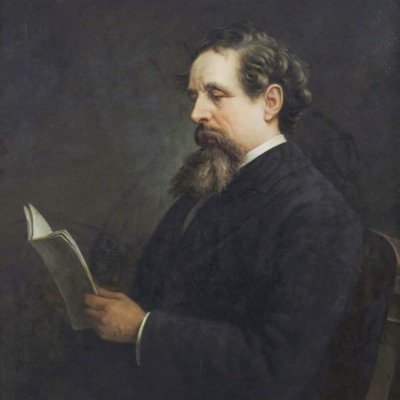
Charles Dickens depicted the best of times and the worst of times through his books. Full of wit, astute observations, and autobiographical experience, they offer a realistic portrayal of the Victorian society in the 19th Century.
Hard times
Born in England in 1812, Dickens’ family fell back on hard times when his father was sent to a debtors’ prison. Just 12 years of age, Dickens was forced to drop out of school and work in a shoe polish factory to repay the debts.
A debtors’ prison was where people unable to pay their debts were incarcerated in the 19th Century. With its dingy rooms and stale food, people lived in wretched conditions in these places. They either have to do hard labour or secure outside funds to repay their debts.
At the factory, Dickens worked ten hours a day, Monday through Saturday, pasting labels onto individual pots of polish. All he received was six shillings per week. He toiled in the factory for nearly a year before his father was released from prison. Dickens recounted the harsh conditions he experienced in the factory in his semi-autobiographical novel “David Copperfield and it continued to shape his writing.
Beating the odds
Learning shorthand on his own, Dickens became a journalist and worked as a court reporter. He went on to edit a weekly journal for 20 years, wrote 15 novels, five novellas, hundreds of short stories and non-fiction articles.
Controversy
Although he is highly regarded as a writer, Dickens’ reputation is far from unblemished. Some of his works have been criticised for their racist and xenophobic views.
Significant works
Dickens is credited with popularising serialised novels. “The Posthumous Papers of the Pickwick Club” (popularly known as “The Pickwick Papers”) was published in instalments over 19 issues from March 1836 to October 1837. Dickens wrote most of “The Pickwick Papers” under the pseudonym Boz. His other popular works include “Great Expectations”, “Oliver Twist”, “A Tale of Two Cities” and “A Christmas Carol”.
Did you know?
- India connection: Dickens’ second son, Lietuenant Walter Landor Dickens died in Kolkata in 1864. His original grave is located at the Bhowanipore Cemetery, while his tombstone has been moved to South Park Street Cemetery.
- More than cats or dogs, Dickens preferred the company of ravens. His pet raven was named Grip. After its death, Dickens had the bird stuffed and mounted in a display case. You can view it at the Free Library in Philadelphia in the U.S. In fact, Grip also features in his novel “Barnaby Rudge: A Tale of the Riots of Eighty”. It is also believed that Edgar Allan Poe, a friend of Dickens, was inspired by Grip when writing “The Raven”, one of his most celebrated poems.
- While working in the shoe polish factory, Dickens used to visit his parents in prison on Sundays.
- The greeting ‘Merry Christmas’ became popular after A Christmas Carol was published.
- He called his favourite daughter Kate, “Lucifer Box” because her temper could flare up in an instant.
- Dickens is credited by the Oxford English Dictionary with introducing no less than 247 new words and usages into the language including “butter-fingers”, “fluffiness” and the verb “to manslaughter”.
Picture Credit : Google

